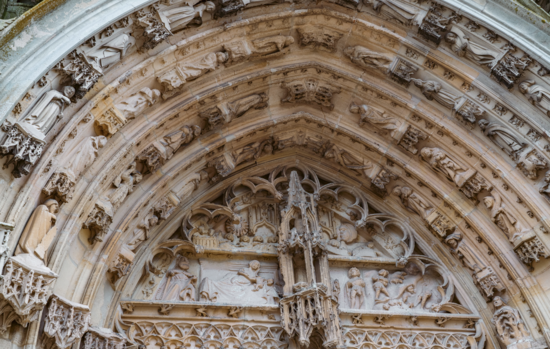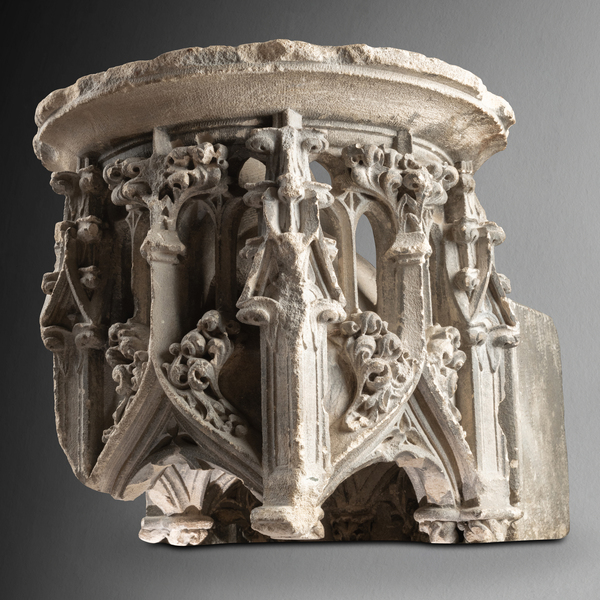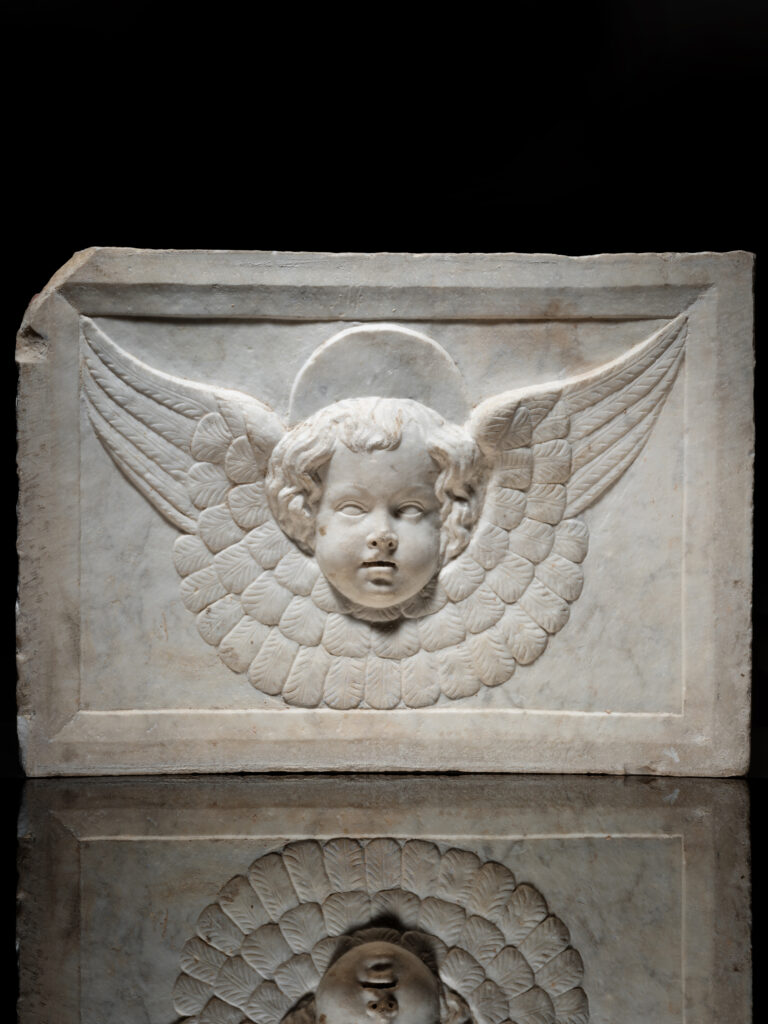This richly decorated canopy of circular plan, consist of three carved faces, each dominated by a cusped arch surmounted by curly cabbage, crockets and foliated fleuron. The tracery windows are completely undercut, giving the illusion of depth. The underside of the canopy is ornamented by a ribbed vault and and a central flower.
The canopy would have originally surmounted a figurative sculpture, creating a micro-architectural space for the statue to inhabit. Such canopies were commonly located on portals but they were also often inside of churches, over tombs or in private chapels.
The distinctive character of this canopy is gained through the deep drill-work, which creates deep shadows and a lace-like effect on the surface of this micro-architectural sculpture. Analogous exemples are found in Northern France, such as at Saint-Maclou de Rouen or Notre Dame de l’Epine.

Stylistically, the canopy fits perfectly within the Flamboyant period of Gothic architecture, which is characterized by curvilinear tracery, curvaceous character of the foliage and flame-like shapes.
In France Flamboyant started to gain popularity in the late 14th century, relying on texture to « infuse a building inside and outside with a Late Gothic character ».
Such lace-like stonework is fragile and the many alterations made to tombs and private chapels over the centuries have jeopardize their survival; this canopy is a rare exemple of Northern France Flamboyant micro-architectural sculpture.





